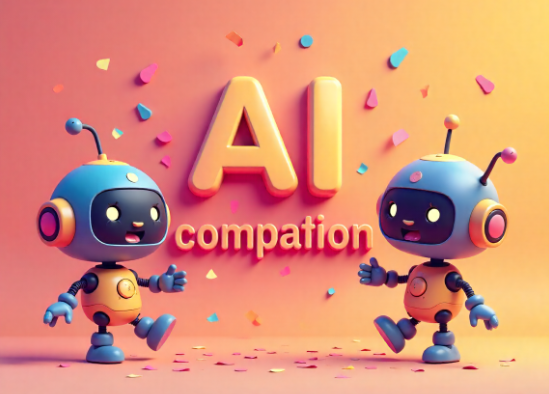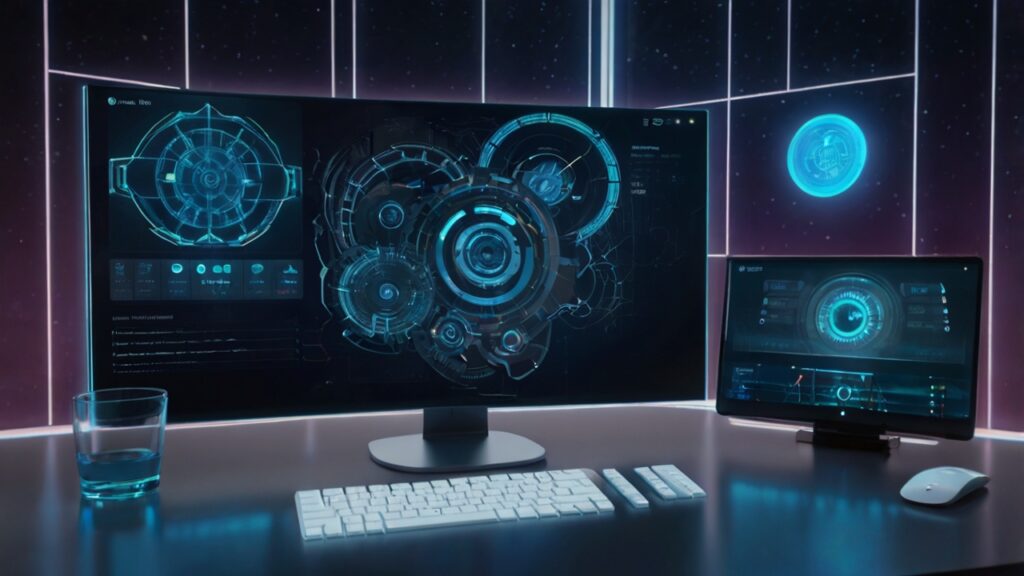The year 2025 has become the turning point for the global artificial intelligence market. From startups raising billions overnight to corporations integrating AI-powered solutions into every workflow, the AI revolution feels unstoppable. Analysts, investors, and creators alike are asking a single question, are we living through the peak of the AI bubble?
The AI boom has reshaped industries, jobs, and innovation itself. Generative models, LLMs, and AI-driven automation are redefining how content, products, and decisions are made. Yet, while the pace of AI investments and startup launches has reached record levels, many see this explosion as a sign of an overheated market, an AI bubble poised to stabilize or evolve.
But is this truly a bubble, or simply the natural evolution of the AI economy as it matures into mainstream technology? Let’s explore how we got here, what’s driving this exponential growth, and why this moment may mark the real beginning of a lasting artificial intelligence revolution.
The Rise of the AI Bubble: How We Got Here
Over the past few years, the world has witnessed a surge in AI startups, each promising to reshape industries with smarter automation and generative capabilities. From AI tools that write, design, and code to AI-powered systems that manage logistics, healthcare, and marketing, artificial intelligence has become both a business necessity and a symbol of innovation.
The AI market analysis for 2025 shows unprecedented growth. Investors have poured billions into AI technology, betting on its transformative power. According to recent trends, AI investments have surpassed many traditional tech sectors combined, reflecting a strong belief in the future of AI.
Behind this surge lies the rapid advancement of generative AI tools, powerful models capable of creating text, images, videos, and even software applications from simple text prompts. These AI applications, powered by deep learning and multimodal AI, have blurred the line between machine creativity and human intelligence.
As a result, the AI industry 2025 looks vastly different from what it was just a few years ago. Automation technology is now integrated into everything from supply chains to entertainment, signaling that we may be witnessing not a temporary bubble, but a new phase of AI expansion.
AI Investments and Market Growth: The Engine Behind the Boom
At the core of this AI boom lies one driving force, AI investments. Venture capital firms, tech conglomerates, and institutional investors have recognized AI development as the key to future competitiveness. Billions are being directed into AI startups, generative AI models, and advanced infrastructure to support AI-powered automation.
This influx of capital has fueled innovation across the AI software market. Every month, new AI companies 2025 emerge with bold ideas: adaptive chat systems, self-learning AI agents, and enterprise automation technology.
But unlike speculative bubbles of the past, the AI revolution is not built on hype alone. The AI economy is underpinned by real, measurable outcomes, higher productivity, cost efficiency, and smarter business operations. The adoption of AI-powered solutions across manufacturing, finance, and media has created tangible value that goes beyond buzzwords.
The current momentum is not a sign of overvaluation; it reflects a global realization that AI infrastructure is the backbone of the next industrial revolution.
Generative AI: The Catalyst of the AI Revolution
If there’s one technology driving the AI market growth, it’s generative AI. In 2025, generative AI models have gone beyond novelty to become mainstream creative engines. They are powering AI-driven automation, AI video production, and AI-powered storytelling, allowing creators and enterprises to scale like never before.
From text-to-image to text-to-video, multimodal AI systems can understand context and create content that’s lifelike and accurate. These tools are not just assisting humans, they’re redefining creativity, design, and data interpretation altogether.
The power of generative AI startups lies in their ability to transform input into intelligent, context-aware output. Whether it’s crafting compelling visuals or simulating real-world processes, AI models are unlocking new dimensions of efficiency.
This creative explosion shows that AI innovation is far from reaching its limit. Instead, it’s setting the foundation for the next phase of the AI economy, where imagination and automation converge seamlessly.
AI Agents and Automation: Redefining How Work Gets Done
The emergence of AI agents marks one of the most significant milestones in the evolution of artificial intelligence. These autonomous digital workers are capable of reasoning, planning, and executing complex tasks, from coding and data analysis to managing entire workflows.
As a result, AI-driven automation has entered a new era. Businesses are leveraging intelligent systems that learn from context, adapt to changes, and operate with minimal human input. This wave of AI-powered solutions is leading to what many call “smart automation,” a concept where humans oversee strategy while AI handles execution.
In AI industry 2025, this shift is accelerating the transition toward fully autonomous enterprises. Factories, offices, and even creative studios now rely on AI systems that streamline production, enhance quality, and minimize waste.
Rather than displacing human labor, AI automation amplifies human creativity and precision, proving that the AI boom is not about replacing people but empowering them to achieve more with less effort.
The Expanding AI Economy: Beyond the Bubble
The AI economy of 2025 is not a speculative trend, it’s a global movement shaping how industries function. The integration of AI tools into business operations has become a necessity rather than an option.
From AI infrastructure to AI-powered analytics, the ecosystem is evolving rapidly. Companies are investing not just in AI software, but also in AI models that can understand multimodal data, generate content, and automate decision-making.
Unlike traditional tech bubbles, this phase of AI expansion shows sustained growth and increasing adoption. Even governments are investing heavily in AI development to enhance national productivity and innovation.
The market’s focus is shifting from experimentation to industrial-scale AI adoption. This maturity signals that we may not be in the peak of the AI bubble, but rather the dawn of a long-term AI transformation that’s still unfolding.
AI Trends 2025: The Road Ahead
As we look toward the future, several AI trends in 2025 stand out as indicators of continued growth.
- AI Personalization at Scale: Businesses are using AI-powered solutions to tailor experiences, automate recommendations, and predict user behavior in real time.
- Multimodal AI Evolution: AI systems can now interpret and generate across text, image, video, and sound, leading to richer applications and interactions.
- AI Infrastructure Growth: The expansion of AI infrastructure and edge computing is making intelligent automation accessible to all sectors.
- AI Agents in Enterprises: Organizations are adopting AI agents to handle routine tasks, streamline workflows, and accelerate digital transformation.
- Generative AI in Every Industry: From marketing to manufacturing, generative AI tools are now powering creativity, production, and predictive insights.
These developments show that the future of AI is not a passing phase. Instead, it’s a sustained evolution toward intelligent automation and AI-powered efficiency.
AI Market Valuation: Stability, Not Speculation
When analysts talk about an AI bubble, they often refer to inflated valuations. Yet, current AI market analysis paints a more balanced picture. The surge in AI investments is backed by real-world results, automation that saves billions, AI models that drive innovation, and AI startups that deliver measurable ROI.
The AI software market is expected to maintain steady growth throughout the decade. Rather than bursting, the AI market valuation is stabilizing as industries standardize their adoption frameworks. This balance suggests that while hype exists, the foundation of AI growth is solid.
The artificial intelligence revolution has entered a self-sustaining phase, one where technology, data, and automation form a loop of continuous improvement.
The Future of AI: Beyond the Hype
If 2025 is the peak of the AI boom, then it’s also the beginning of something bigger, the normalization of AI-driven systems across daily life. From personal assistants to enterprise automation, AI applications are quietly becoming the backbone of productivity and creativity.
AI technology will soon be as common as electricity, invisible yet essential. The AI future won’t be defined by speculation but by how efficiently we integrate AI-powered solutions into every workflow.
The future of AI innovation lies in expanding access, enhancing usability, and creating intelligent systems that think, learn, and adapt in real time.
Conclusion: Not a Bubble, But a Breakthrough
The world isn’t witnessing the collapse of an AI bubble, it’s watching the solidification of an AI-powered economy. The combination of generative AI, machine learning, and AI-driven automation has ushered in an era of limitless potential.
The artificial intelligence market will continue to expand, powered by innovation, adoption, and the pursuit of smarter technologies. Far from peaking, AI is just beginning its climb toward transforming every aspect of human progress.
Editor’s Opinion
The term “AI bubble” doesn’t do justice to what’s happening today. Unlike short-lived tech trends, AI growth represents a permanent shift in how the world functions. It’s not speculation, it’s evolution. As AI models, agents, and generative systems become more advanced, they’ll reshape how we live, work, and create.
We aren’t witnessing a bubble about to burst; we’re standing at the gateway of the AI century.
Frequently Asked Questions
What is the AI bubble?
In two sentences: To claim that there is an AI bubble is to claim that private investments in AI and the valuations of AI companies are massively inflated relative to the financial gains accrued by the actual demand for AI
What would happen if an AI bubble bursts?
Former IMF chief economist Gita Gopinath estimates that if the market crashes like it did after the dotcom bubble burst at the turn of the century, it would wipe out $20tn in wealth held by American households and $15tn in wealth held by investors in the rest of the world
Should investors still invest in AI startups?
Yes, but wisely. The key is to back startups with solid technology, real-world use cases, and sustainable growth strategies rather than chasing every new AI trend















